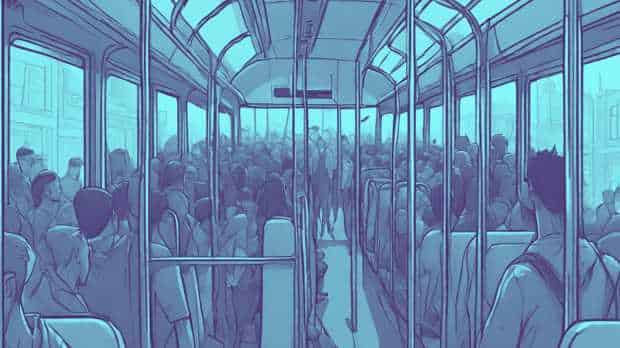The space around your body, (‘peripersonal space’, to all you neuroscientists) has always been seen as having a gradual boundary. New research into the link between anxiety and personal space has now shown real physical limits to the space.
The boundary of the ‘peripersonal space’ surrounding the face as 20-40cm away (about 8-16 inches). Also, the exact distance was found to vary with individuals. People having anxiety traits have larger peripersonal space, it was found.
University College London experimenters Dr Chiara Sambo and Dr Giandomenico Iannetti recorded the blink reflex, a defensive response to possibly dangerous stimuli at varying distances from the subject’s face. Then they compared the reflex data to the results of an anxiety test where subjects rated their levels of anxiety in various situations.
Defensive Peripersonal Spaces
People scoring high on the anxiety test tended to react stronger to stimuli at a distance 20cm from their face than subjects who got low scores on the anxiety test. Researchers categorized those who reacted more strongly to further away stimuli as having a large ‘defensive peripersonal space’ (DPPS).
“This finding is the first objective measure of the size of the area surrounding the face that each individual considers at high-risk,” said lead author Dr Giandomenico Iannetti, “ and thus wants to protect through the most effective defensive motor responses.”
Quicker than the Blink of an Eye
15 people aged 20 to 37 were selected for the experiment. Researchers gave an intense electrical stimulus to a specific nerve in the hand, which causes the subject to blink. This is called the hand-blink reflex and is not under the conscious control of the brain.
The reflex was observed with the subject holding their own hand at 4, 20, 40 and 60 cm away from the face. The extent of the reflex was used to establish how dangerous each stimulus was considered, and a larger response for stimuli further from the body indicated a larger DPPS.
The researchers think that the findings could be used as a test to link defensive behaviours to levels of anxiety. This might be quite useful to determine the level of risk assessment skills in people with jobs that include dangerous situations, like firemen, police and soldiers.
Reference:
- Giandomenico Iannetti and Chiara Sambo
Better safe than sorry? The safety margin surrounding the body is increased by anxiety.
The Journal of Neuroscience, 28 August 2013, 33(35):14225-14230;doi:10.1523/JNEUROSCI.0706-13.2013
Last Updated on October 5, 2023
